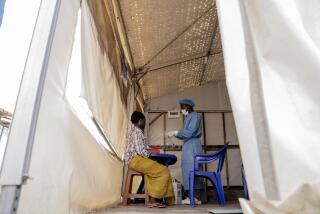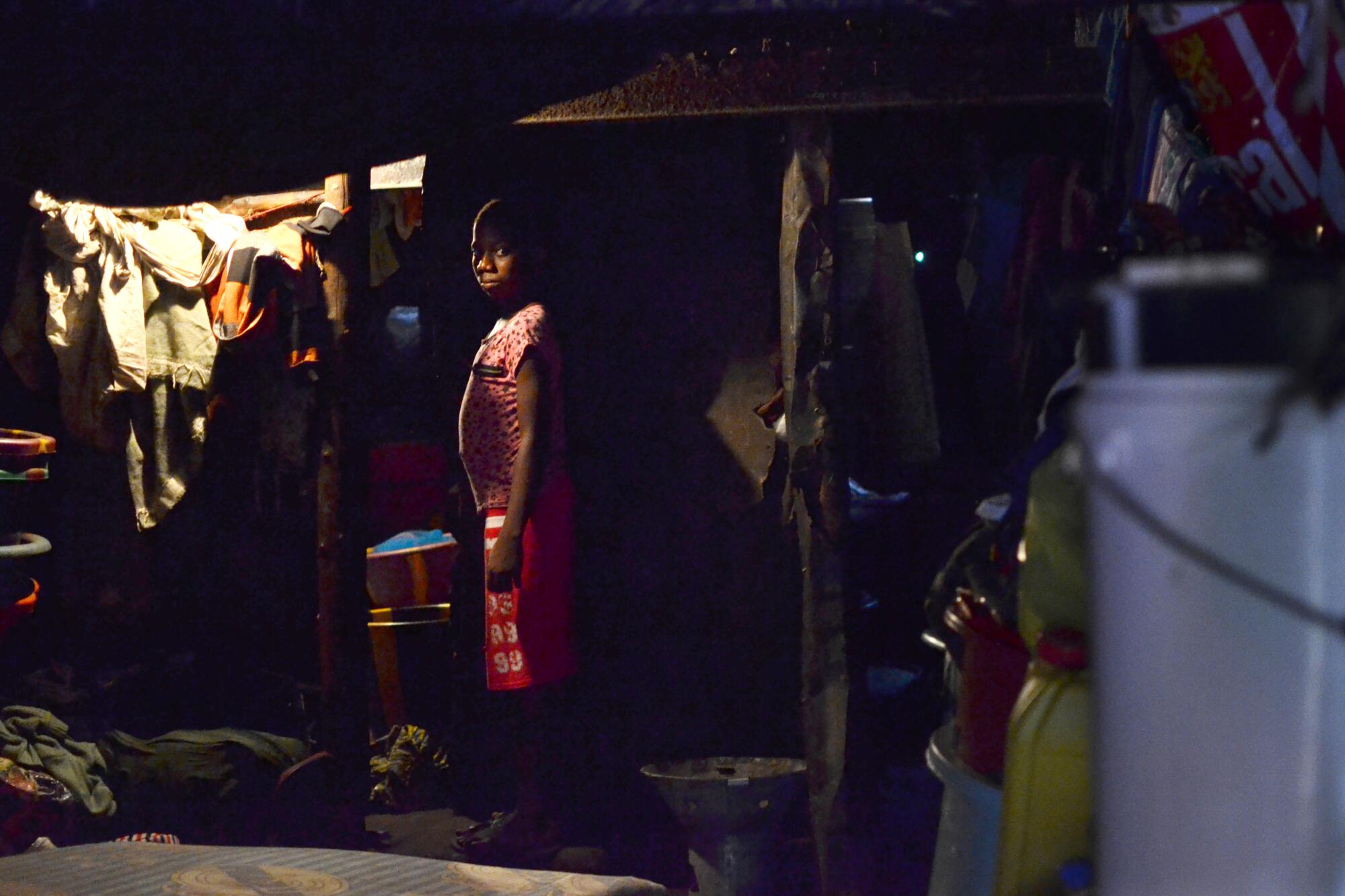
- Share via
Four years before COVID-19 swept the globe, I climbed onto the back of a motorbike in Freetown, Sierra Leone, and headed three miles up the steep, dusty terrain behind the local Shell gas station. It was the only way to reach the village of Dirty Box Junction.
Months earlier, a 14-year-old girl had taken the same winding route home after buying cellphone messaging credits and a case of Fanta. The Shell station had been crowded; the cashier had been feverish.
Within 21 days, the teenager, Mary Yavannah, had watched helplessly as blood poured from her mother’s nose and mouth. It was Ebola, and she died within hours, Mary told me, crouching on her bare mattress as she fiddled with her hair beads and wiped a tear from her chin.
I sat with her for a while, my notebook long since tucked away. We listened as her aunties bartered for bleaching lotion out front. Mary was consumed with guilt: She had later tested positive for the virus. Had she carried it to her mother’s doorstep?
I couldn’t give her an answer.
But even as the death toll had climbed in 2015, many of Mary’s neighbors still believed Ebola was a hoax, or a biological weapon planted by powerful elites to exploit oil and diamonds.
Government messaging had been haphazard and often contradictory. Health workers lacked adequate protective gear. The economy teetered on the brink of collapse. Still, communities refused to heed public health warnings and socially distance.
Sound familiar?
I have to admit, I’m surprised. Years ago, I parachuted into West Africa to report on the virus with a buoyant pack of elitism — a smug, subconscious belief in America as the land of the obedient, home of the hygienic; the country with a digitized disease surveillance system, trustworthy leadership, and little reason to fall prey to conspiracies.
Indeed, watching West Africa fight the Ebola virus seemed, to many Americans, like following a dystopian sci-fi series: nerve-racking and episodic, but at the end of the day, unrelatable. Just wash your hands, for goodness’ sake.
But with the arrival of the coronavirus in the United States, it’s become clear that it was all the previous viruses’ weaknesses — not America’s strength — that allowed the world’s most powerful nation to stave off a widespread contagion until now.
And my journey as a medical journalist — first there, then here — has crystallized with stunning clarity the failings of my own country: Americans still gather in hordes at Orange County beaches, Midwest rallies and even the White House lawn, hugging one another and refusing to wear masks. The battle against the novel coronavirus has been a slow, humiliating depiction of how the U.S. has lost its capacity to commit to the sort of collective action required to confront contagion.
As a result, the U.S. outbreak alone has killed 20 times the number of people who died in West Africa’s Ebola epidemic — and counting.
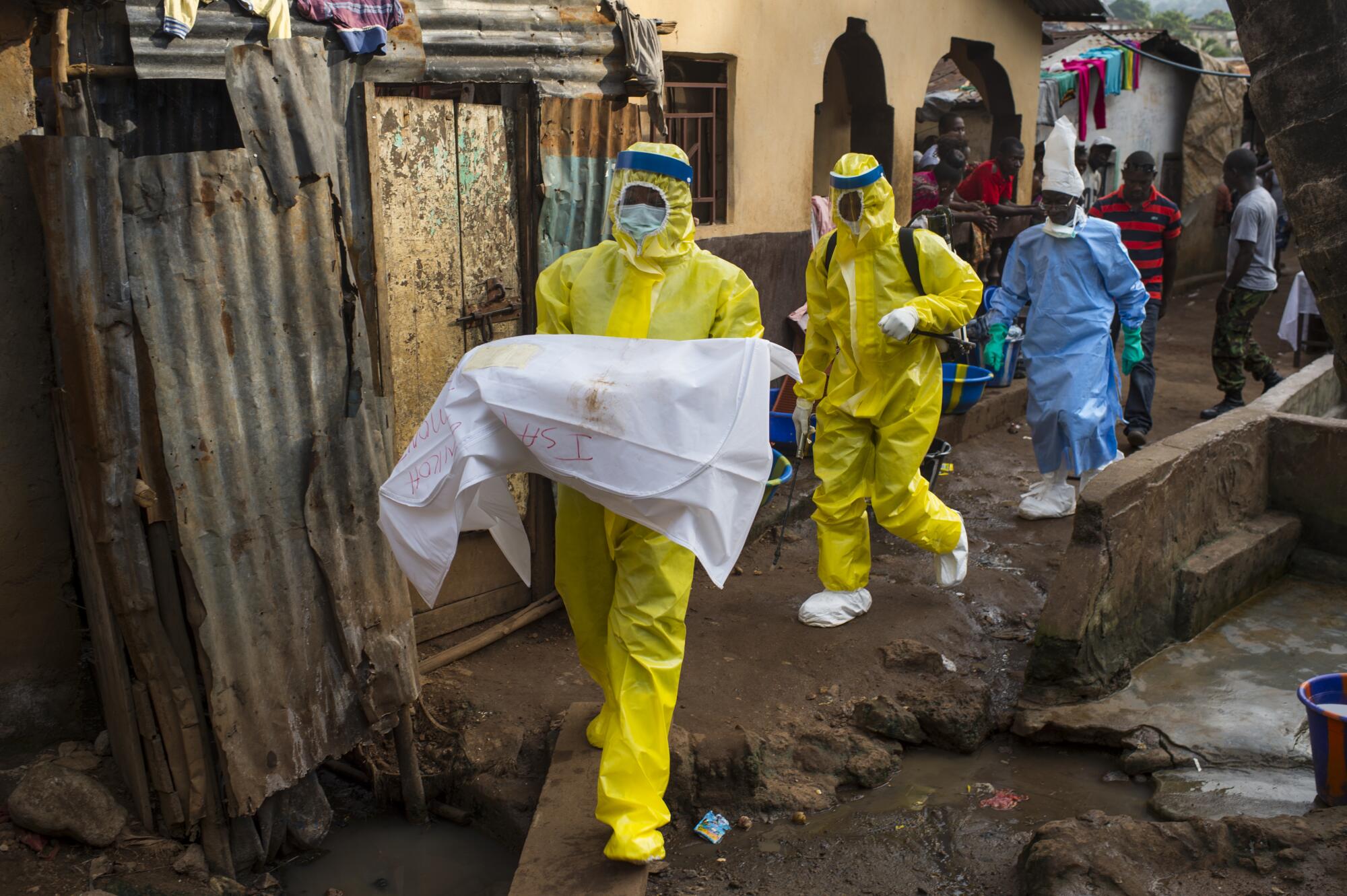
“The outbreak playbook has always been that the United States looks on and says, ‘Those poor things, that would never happen here,’” said Lawrence Gostin, director of the World Health Organization Collaborating Center on National and Global Health Law.
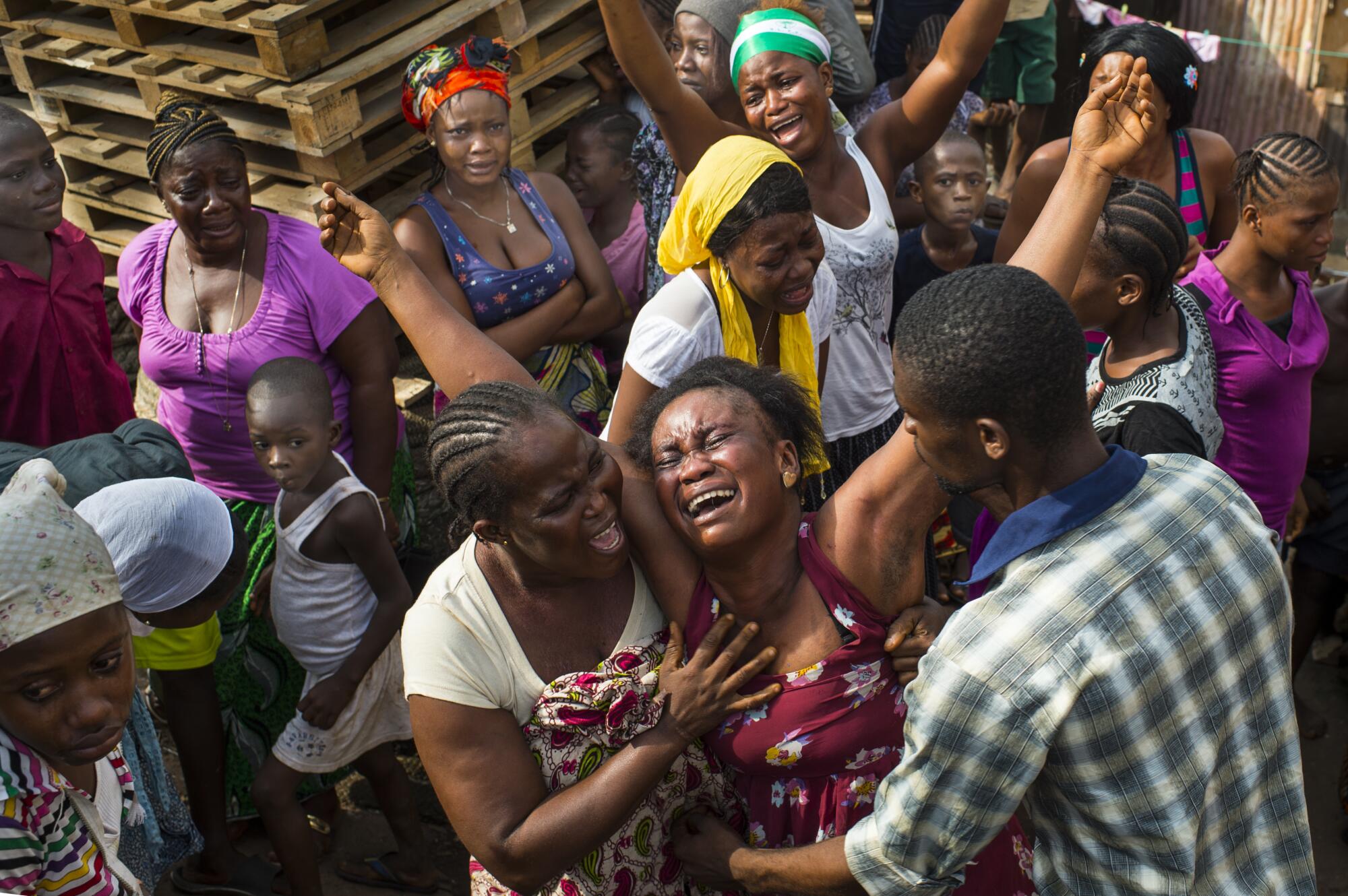
“But the script has been flipped entirely — with Africa being well hardened by novel outbreaks, and the United States flailing badly.”
And while sub-Saharan Africa still faces the scourge of COVID-19, the people who make up its diverse nations, bustling capitals and remote villages have shown their resilience before. Their past journeys provide for the United States a blueprint for the battle: how a minor outbreak evolves into a devastating epidemic, and how each individual’s decision to become part of the solution is, ultimately, the only way out.
Just ask the residents of Dirty Box Junction.
The Way In
The Ebola epidemic in West Africa in which more than 28,000 were sickened and more than 11,300 died probably originated in a bat. The first known victim — an 18-month-old toddler in Guinea — is believed to have spread the virus to five others, then soon to Conakry, a densely populated transportation hub — not unlike Wuhan, China.
Whereas a coronavirus infection looks much like influenza, Ebola’s symptoms resembled those of malaria and typhoid, and the region’s weak public health surveillance system let early signs of trouble go undetected. And though Ebola is more difficult to contract than the coronavirus, it is far more often fatal.
International efforts to stifle the budding Ebola outbreak were sluggish and piecemeal. Like state borders in the U.S., West Africa’s boundaries were porous. And each time the virus reached a new urban center, like Freetown — or, in the case of the coronavirus, New York City — it erupted.
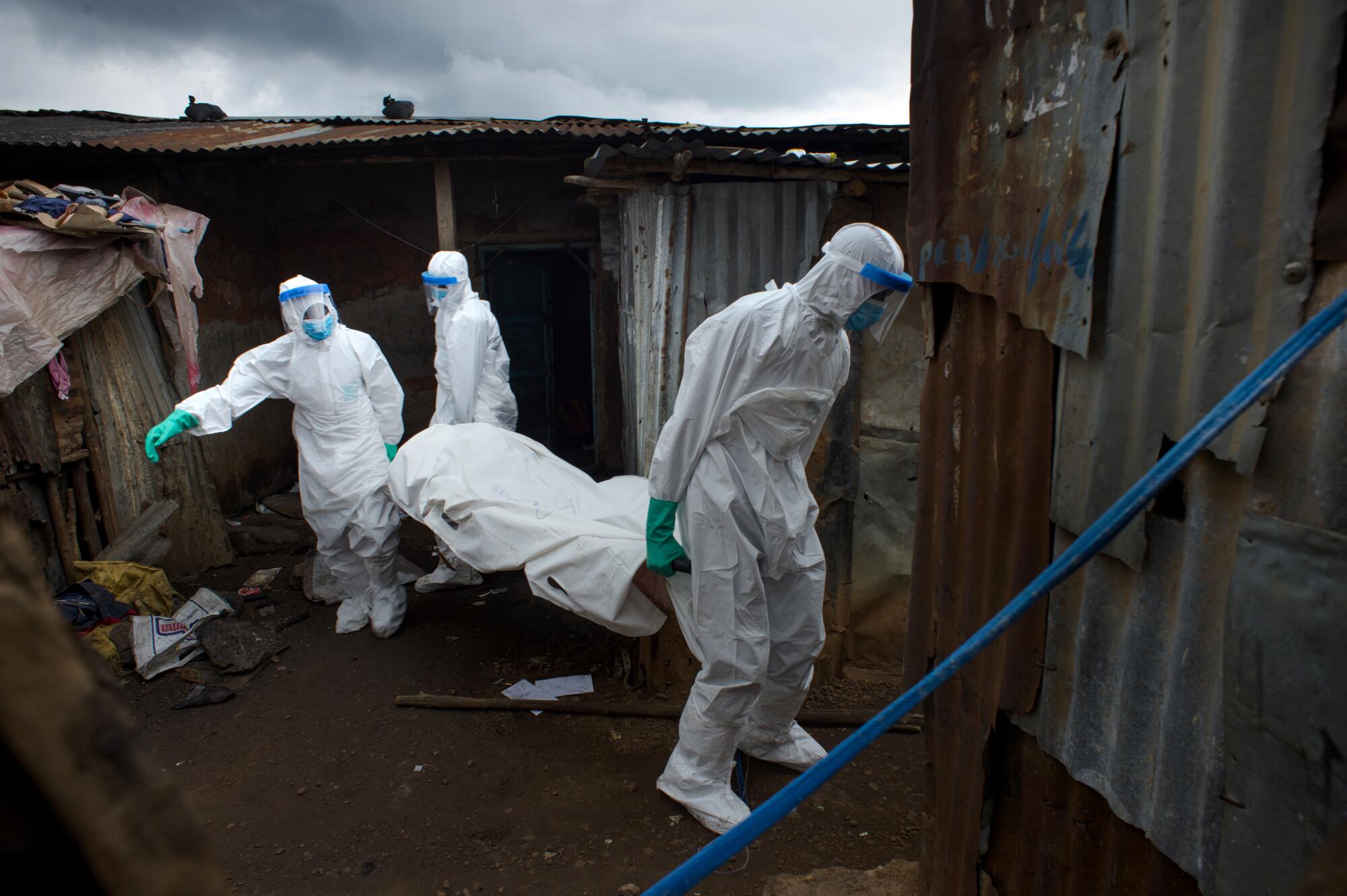
Such pathogenic time bombs — whether due to officialdom’s incompetence or obfuscation — have played out similarly in other outbreaks, like a 2016 yellow fever contagion in the Democratic Republic of Congo, where I reported on a 12-year-old boy sprawled on a sheet in a muggy Kinshasa hospital.
The boy watched, expressionless, as fluid dripped into his intravenous line from a pole overhead. The whites of his eyes were daisy yellow.
“Another yellow fever case,” I said to the nurse, nodding toward the boy.
“Suspected,” the nurse corrected me, smirking as she explained that the Congolese government had not run a test in more than a month. “They’re all only ‘suspected.’”
It was a foreshadow to Los Angeles County in the spring of 2020: The Congolese government’s laboratory had run out of basic chemical reagents for testing, and new shipments hadn’t arrived. The lack of official diagnoses was creating an illusion of non-urgency as the virus wove through communities.
As scientific authorities clamped down on communities, skepticism in West Africa surrounding the Ebola virus seeped ever deeper into the social fabric. Groups defied quarantine orders to gather for virus-laden worship services, weddings and — increasingly — funerals.
“We’d always thought, ’Well, we have the best scientists and epidemiologists and contact tracers in the world’ — and yet it was useless,” Gostin said. “West Africa taught us that scientific prowess alone doesn’t work.”
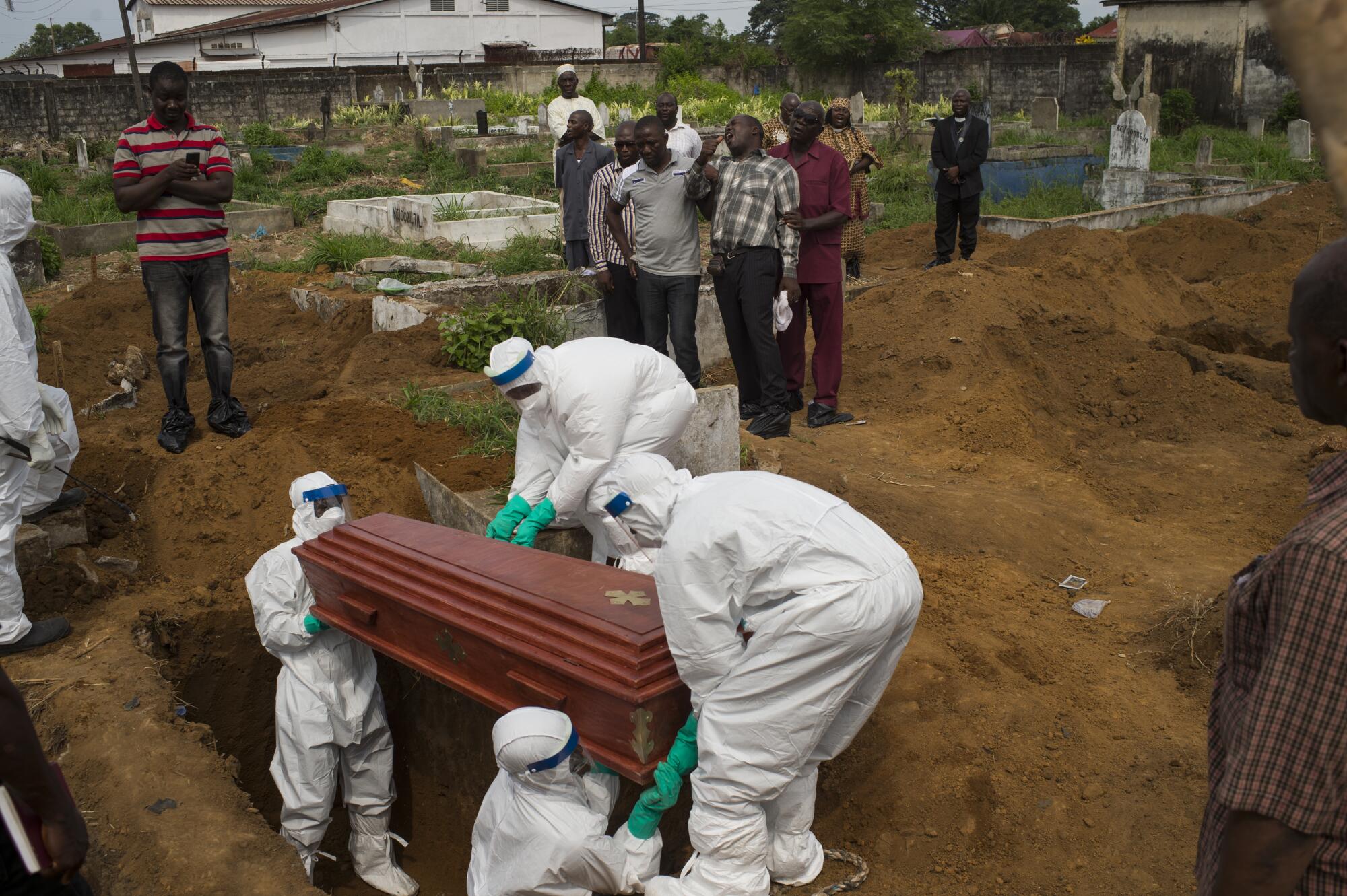
Threats and attacks on healthcare workers rose, compounding the dangers they already faced by treating infectious patients without adequate protective gear. As with the coronavirus outbreak in the United States, health officials resigned; nurses began to strike; hospital workers lived with a heavy sense of hopelessness over their eventual fates.
When I asked Malcolm Albert, a burly health worker in east Freetown, about the dynamics that led to his post-traumatic stress, he leaned back in his folding chair outside the hospital tent. Sweat glistened on his brow as he rolled his index finger over a grain of rice on the plastic table.
He ground his teeth together, thinking. Then he sighed.
“It’s just anger everywhere, it’s worse than war,” he said. “Because no one knows who their next enemy is.”
The Way Out
It’s impossible to predict when a community will pivot from denial to action in an epidemic. For Dirty Box Junction — named for the thousands of square feet of smoke-billowing trash in its center square — it came sometime in the spring of 2015.
Before she contracted Ebola, Mary had been teaching her younger cousins the lyrics to Justin Bieber’s “Boyfriend.” Afterward, she returned home from a month of being comatose in an Ebola treatment tent to find that every other member of her nuclear family was dead.
But, while she’d been away, the guilt she’d felt at her mother’s passing had somehow permeated the rest of her community. Slowly, she noticed that buckets of chlorine began to guard thresholds. Community leaders teamed up with military personnel to stop incoming cars and motorbikes — like mine — and demand proof of hand sanitizer tubes. Children chanted the public radio songs calling for social distancing and safer burials, much like the U.S. Centers for Disease Control and Prevention’s funeral guidance for COVID-19.
Through dozens of interviews, I tried to understand why the residents of Dirty Box Junction now complied with safeguards. I received just as many answers: Government compulsion. Overwhelming fear. Sheer exhaustion.
A definitive answer seemed unknowable. But the term for Ebola in Mende, one of Sierra Leone’s languages, became “monda wote,” which translates to “family turn round.” When the loss had become too great to bear, households began to change their lifestyles.
This year, when COVID-19 struck, Dirty Box Junction — and the rest of sub-Saharan Africa — considered it unwelcome, but not unprecedented. Several countries declared a state of emergency with only a single case; they screened every last airline passenger and formed early task forces with former Ebola officials to obtain test kits, design contact tracing teams and develop coherent public messages.
Many of their techniques came from training led by the CDC, which, on home soil, has proved strikingly ineffectual.
Sierra Leone had a functional coronavirus test long before the United States did. And from mid-March to mid-July, Rwanda saw just 1,500 coronavirus cases, while similarly populated Ohio counted more than 60,000.
The last eight months covering the novel coronavirus in the United States has been a replay of what journalists and global health workers witnessed in West Africa and other outbreaks in the developing world. This isn’t Sierra Leone, a nation battered by recent civil wars, or Congo, a nation beset by more than a dozen armed rebel groups. And yet, in the United States, hubris, skepticism and neglect have left more than 8.3 million Americans infected and more than 222,000 dead.
The two outbreaks were harbingers of the notion that science and technology alone can’t outpace a virus. And for me, the crisis has come with a revelation: It’s precisely our belief that it can’t happen here — that we are not Africa — that has allowed it to happen here.
And though Ebola had pushed Dirty Box Junction to its brink, the spirit of the village endured. One late afternoon, as I left Mary’s house, her uncle approached the home with a full-sized chest freezer balancing on his head; the roadsides were dotted with schoolchildren, shoeless but dressed in stark white uniforms.
I watched from an auntie’s porch as Mary headed to the market, nimbly crossing a 30-foot-deep ravine on a makeshift bridge: five rotten stalks of bamboo. It seemed risky to me, but her auntie explained that new plywood reinforcements had been installed underneath the stalks.
The residents of Dirty Box Junction had calculated their risks — and decided to help one another carry on.
More to Read
Sign up for Essential California
The most important California stories and recommendations in your inbox every morning.
You may occasionally receive promotional content from the Los Angeles Times.

